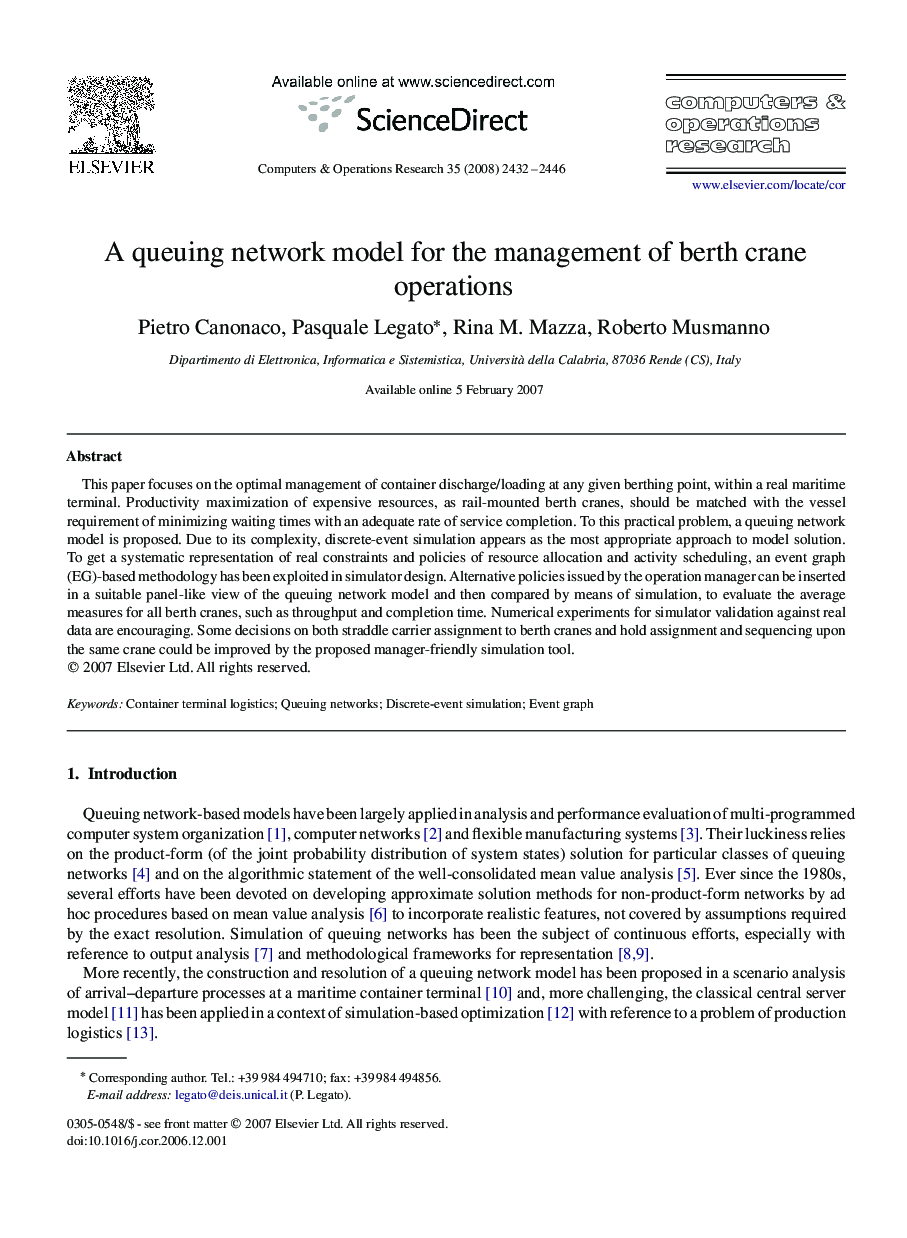| Article ID | Journal | Published Year | Pages | File Type |
|---|---|---|---|---|
| 474045 | Computers & Operations Research | 2008 | 15 Pages |
This paper focuses on the optimal management of container discharge/loading at any given berthing point, within a real maritime terminal. Productivity maximization of expensive resources, as rail-mounted berth cranes, should be matched with the vessel requirement of minimizing waiting times with an adequate rate of service completion. To this practical problem, a queuing network model is proposed. Due to its complexity, discrete-event simulation appears as the most appropriate approach to model solution. To get a systematic representation of real constraints and policies of resource allocation and activity scheduling, an event graph (EG)-based methodology has been exploited in simulator design. Alternative policies issued by the operation manager can be inserted in a suitable panel-like view of the queuing network model and then compared by means of simulation, to evaluate the average measures for all berth cranes, such as throughput and completion time. Numerical experiments for simulator validation against real data are encouraging. Some decisions on both straddle carrier assignment to berth cranes and hold assignment and sequencing upon the same crane could be improved by the proposed manager-friendly simulation tool.
